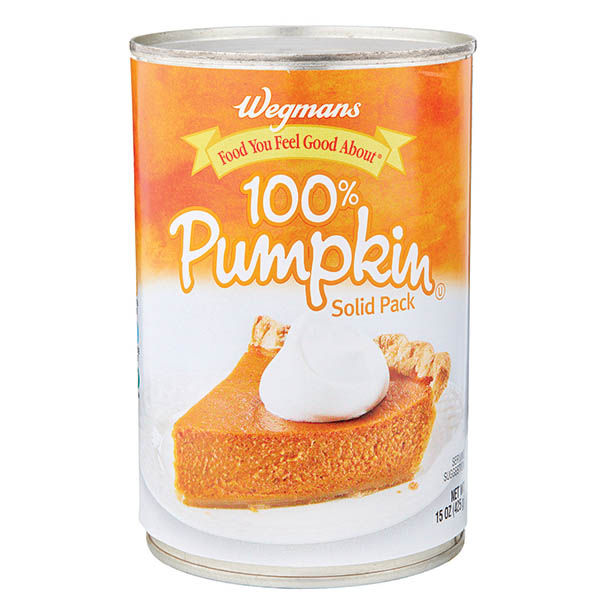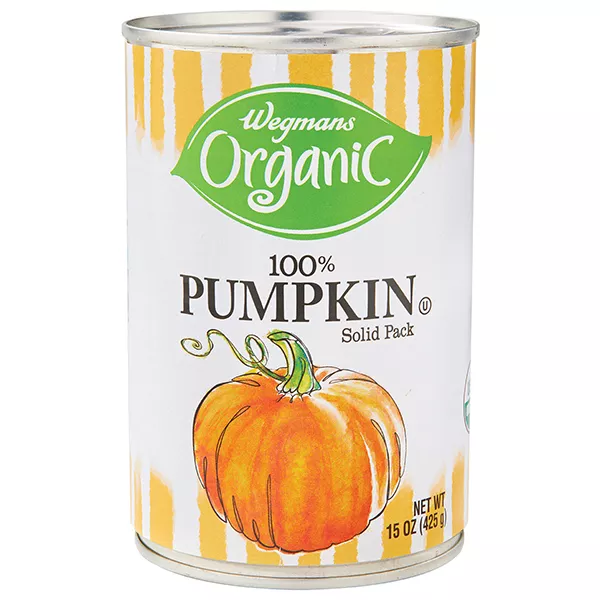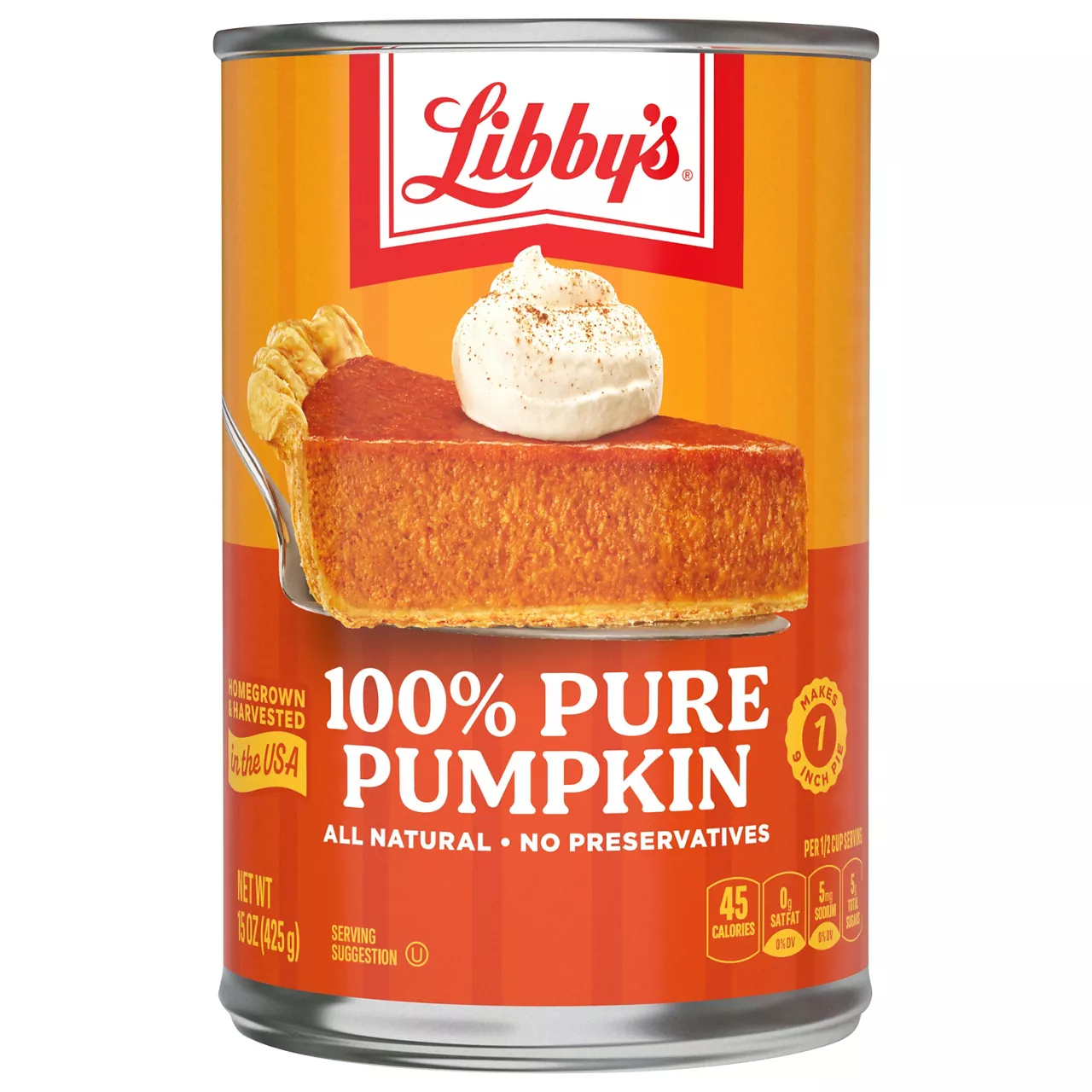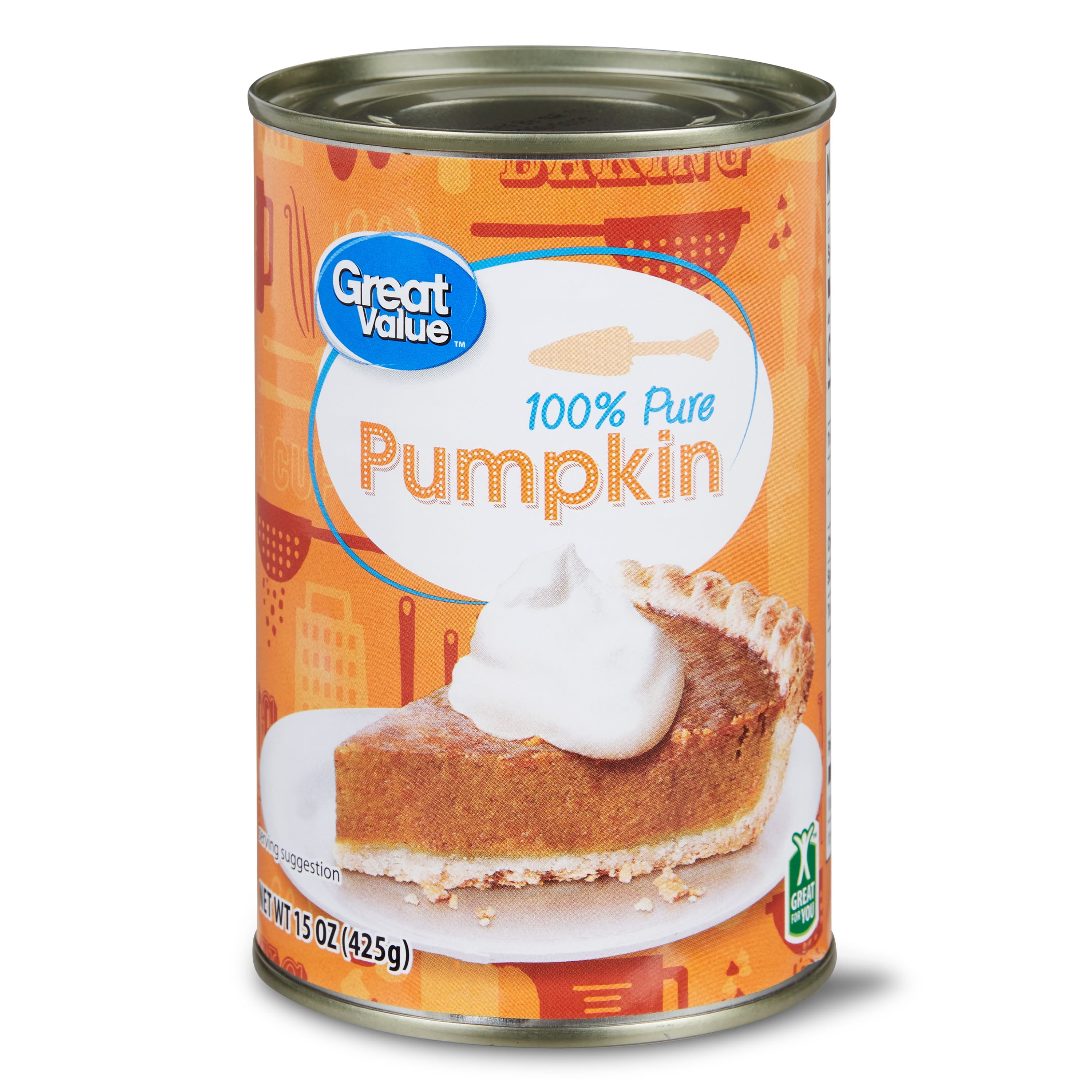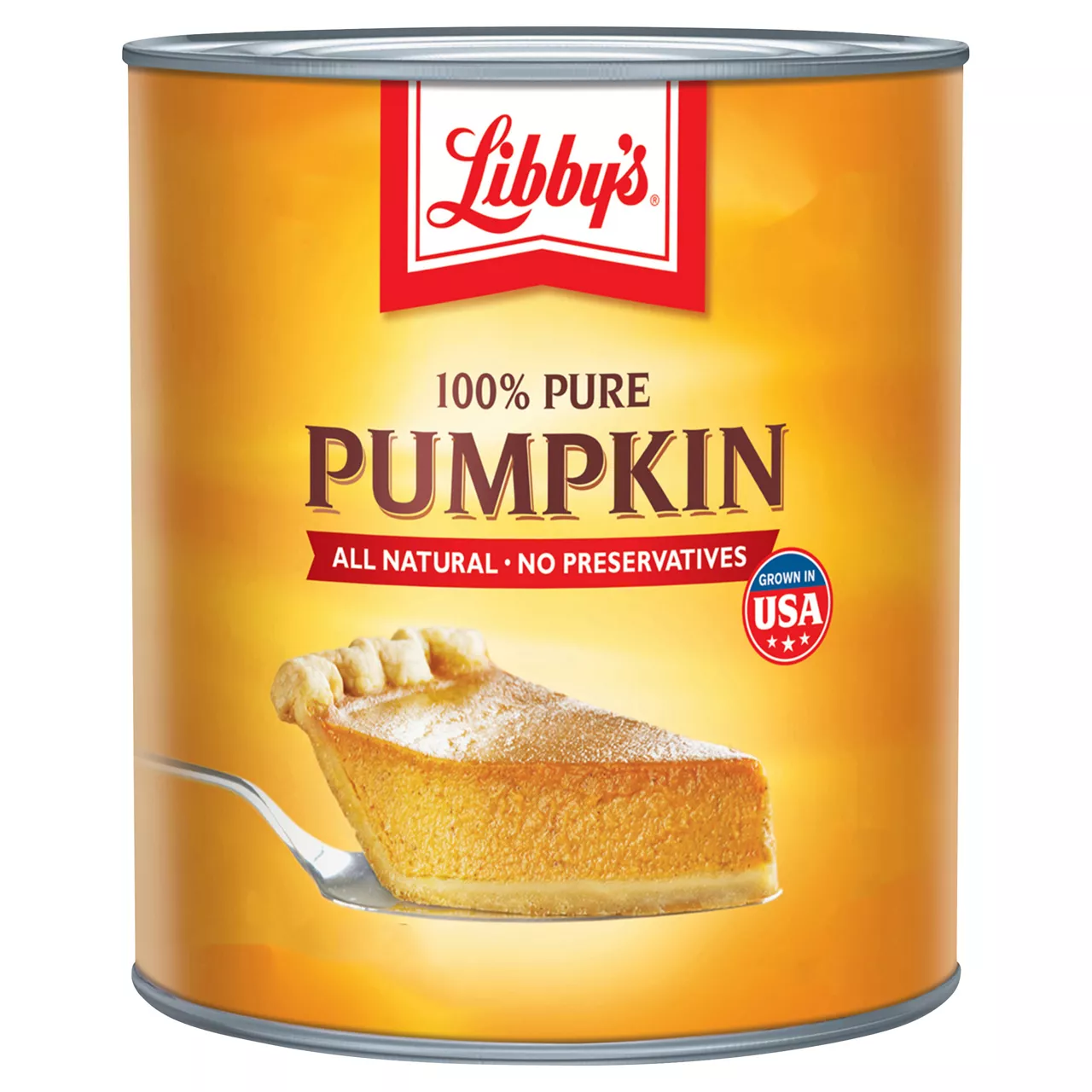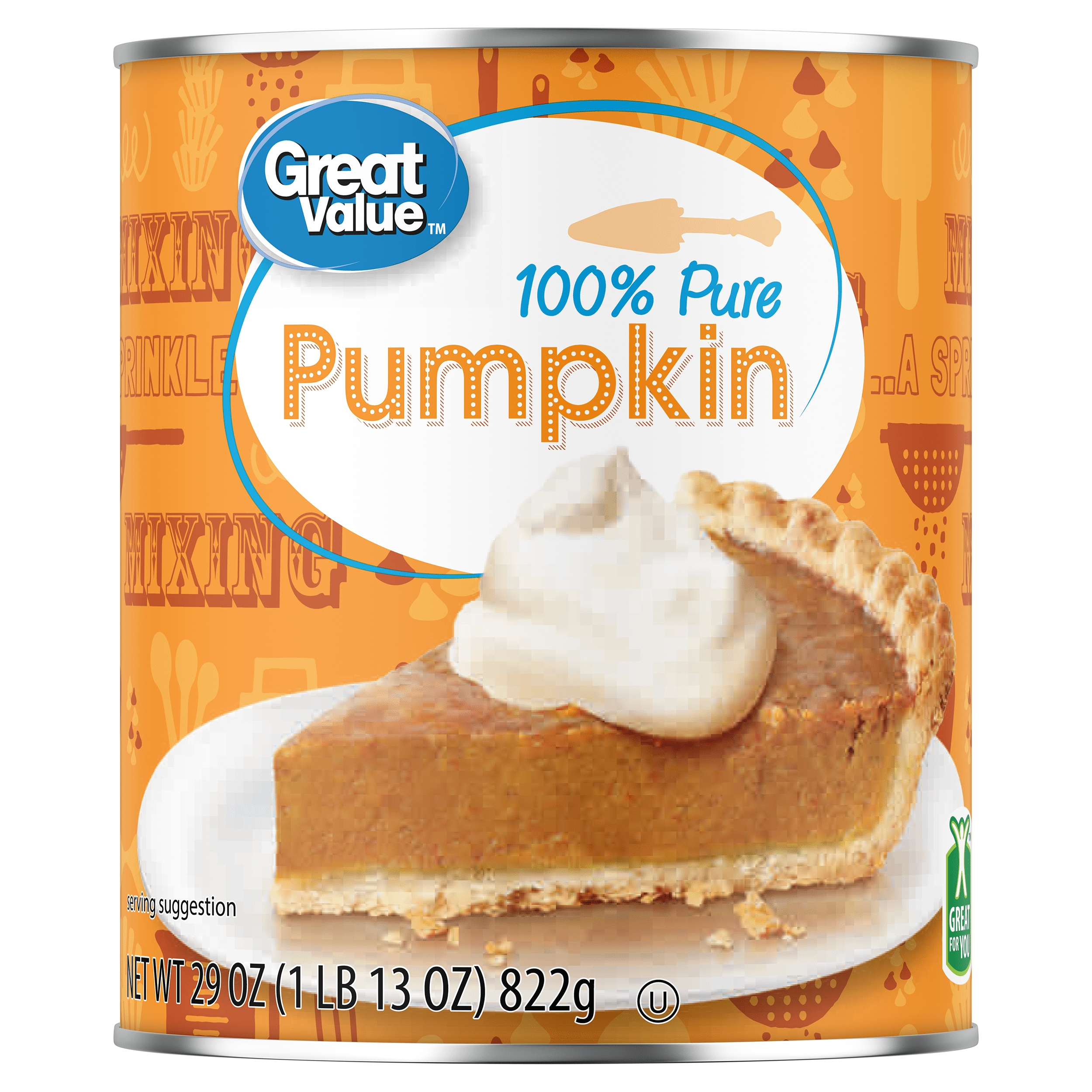DESSERTS
BREAKFAST AND BRUNCH
SOUPS
Pumpkin Puree
Pumpkin puree is a versatile ingredient made from cooked, pureed, and strained pumpkin flesh. It is a popular choice for adding flavor, texture, and nutritious benefits to various dishes, most commonly used in sweet desserts and baked goods. It is available in both canned and homemade versions, with canned puree typically being more convenient, consistent in texture, and available year-round.
When made from fresh pumpkin, the puree can vary in taste and quality depending on the type of pumpkin used, ranging from sweet to somewhat bland. It is rich in vitamins and minerals, particularly vitamin A, and is a low-calorie, high-fiber addition to many dishes like pies, soups, cakes, or sauces.
91%
CARBS
0%
FAT
9%
PROTEIN
334 Pumpkin Puree Products
Wegmans 100% Pumpkin, Solid Pack
Wegmans Organic 100% Pumpkin, Solid Pack
Wegmans Food You Feel Good About 100% Pumpkin, Solid Pack
Libby's 100% Pure Pumpkin, All-Natural Canned Pumpkin Puree Filling for Baking Holiday Pumpkin Pie Dessert
Great Value 100% Pure Pumpkin
Libby's 100% Pure Pumpkin
Baker's Corner Canned Pumpkin
Great Value 100% Pumpkin
100% Pure Pumpkin
Libby's Libby'S 100% Pure All-Natural Canned Pumpkin
Used In 274 Recipes
3
Creamy Pumpkin Chicken Curry
1
Hearty Spiced Pumpkin Bread
1
Pumpkin Spice Cheesecake Brownie Cups
1
Hearty Autumn Harvest Pasta
4
Autumnal Pumpkin Alfredo Pasta
1
Golden Pumpkin Oat Muffins with Chocolate Burst
5
Pumpkin Infused Dark Chocolate Oatmeal Muffin Cups
2
Decadent Pumpkin Butter Cake
Pumpkin Puree Is Frequently Used With
Pumpkin Puree FAQ
Pumpkin puree, a staple in many kitchens, especially during the fall and festive seasons, is often associated with pumpkin pies and breads. However, its potential applications aren't limited to sweets. Pumpkin puree provides a moist, creamy texture and a distinctive earthy flavor to many types of dishes, savory or sweet. It's also highly nutritious, being rich in vitamin A, fiber, and antioxidants.
One of the major queries surrounding pumpkin puree is if it can be interchanged with fresh pumpkins. While fresh pumpkins add a distinct homey flavor to dishes, they require a tedious preparation process to transform into a similar consistency as canned pumpkin puree. If you don't mind the effort, be sure to choose soup or sugar pumpkins for the best flavor and texture.
Also, not to be confused with pumpkin pie filling, pumpkin puree is unseasoned, providing a blank canvas for cooks to season as they prefer. Always be careful when tackling recipes calling for pumpkin puree, verifying that you’re not unintentionally using the sweetened, spicier variety.
Furthermore, pumpkin puree goes well with many spices, such as cinnamon, nutmeg, and cloves. It can even be mixed with some herbs or other ingredients to create unique flavor profiles in dishes.
If you want to experiment, try it as a base for smoothies, a healthy substitute for oil or butter in baking, or even incorporate it into pasta sauces for a nutritious spin on your everyday meals.
Can I use pumpkin pie filling instead of pumpkin puree?
What can I substitute for pumpkin puree in a recipe?
How can I make homemade pumpkin puree?
What spices go well with pumpkin puree?
Can I use pumpkin puree in a smoothie?
Can pumpkin puree be a substitute for butter or oil in baking?
How do I balance the flavor of pumpkin puree in savory dishes?
Does the type of pumpkin affect the taste of the puree?
Can pumpkin puree be used as a sauce base?
Can I swap fresh pumpkin for canned pumpkin puree in a recipe?
Expiration & Storage Tips
When does pumpkin puree expire?
Canned, unopened pumpkin puree typically stays fresh for about 1 to 2 years beyond the printed date on the package if kept in a cool, dark pantry. Once opened, the puree should be refrigerated and consumed within 5 to 7 days. Alternatively, opened leftover pumpkin puree can be frozen for future use for up to 3 months. Homemade pumpkin puree doesn't contain preservatives, so once cooled, it should be refrigerated and consumed within 4 to 5 days, or be frozen for up to 3 months for a longer lasting storage.
How do you tell if pumpkin puree is bad?
Pumpkin puree will usually darkens significantly in color when it starts to go bad. If you notice any mold, which might appear as white, greenish or black spots, its time to discard it. Other signs of spoilage include an off smell, a sour taste, or a slimy texture. Always err on the side of caution when it comes to food safety.
Tips for storing pumpkin puree to extend shelf life
• Always store unopened cans of pumpkin puree in a cool, dry place away from direct sunlight.
• Once opened, transfer the leftover pumpkin puree to an airtight container before refrigerating to keep it fresh longer.
• You could freeze leftover pumpkin puree in ice-cube trays for smaller, convenient portions to use later. Once frozen, pop the cubes into a zip-top plastic bag, squeezing out the air before sealing.
• If freezing a larger amount of puree, consider flattening the bag for efficient storage space and easier defrosting.
• To defrost frozen pumpkin puree, transfer it to the refrigerator and let it slowly defrost overnight. If you are in a rush, you could defrost it in a bowl of warm water, or even in the microwave using the 'defrost' setting.
EXPIRES WITHIN
19 - 29
MONTHS
Substitutes
Health Info
Macros
20g
CARBS
0g
FAT
2g
PROTEIN
Allowed on these diets
LOW FAT
HIGH CALCIUM
VEGETARIAN
KETO
PALEO
WHOLE 30
MEDITERRANEAN
LOW CARB
VEGAN
LACTOSE FREE
GLUTEN FREE

